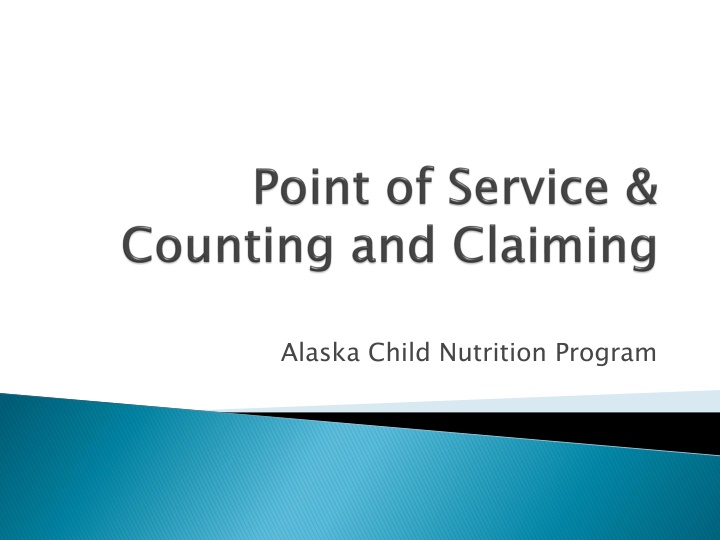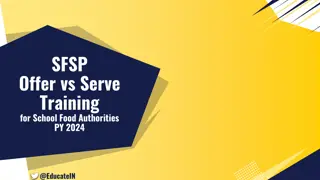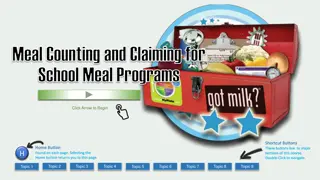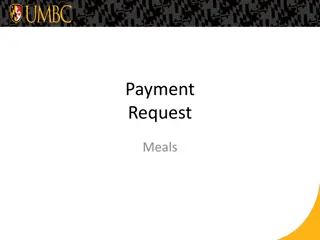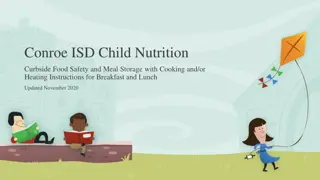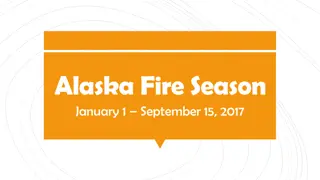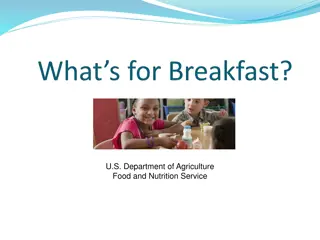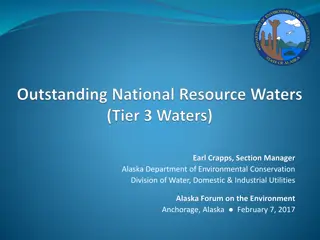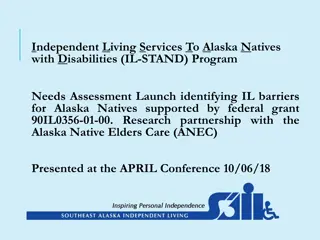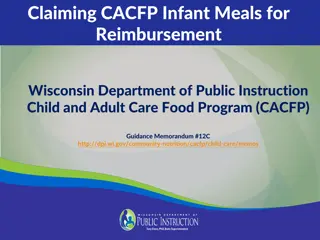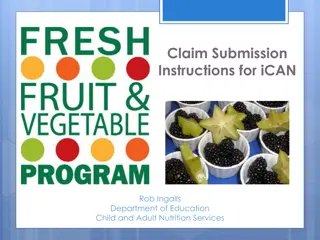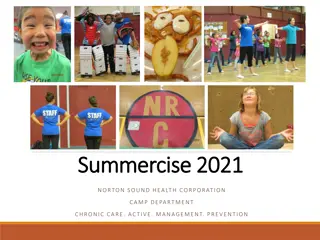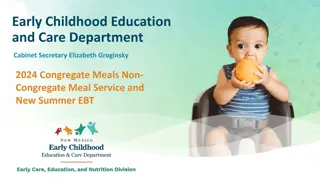Alaska Child Nutrition Program: Meal Counting & Claiming Systems
"Explore the Alaska Child Nutrition Program's guidelines on acceptable point of service counting and claiming systems, along with eligibility documentation, meal counts, and reimbursement procedures. Learn about acceptable meal counting systems and the importance of maintaining accurate records for free and reduced meals. Discover tools like class rosters, ticket systems, and computerized bar code ID cards to ensure accountability in meal service. Stay compliant with meal pattern requirements and monitoring practices for reimbursable meals in school settings."
Download Presentation

Please find below an Image/Link to download the presentation.
The content on the website is provided AS IS for your information and personal use only. It may not be sold, licensed, or shared on other websites without obtaining consent from the author.If you encounter any issues during the download, it is possible that the publisher has removed the file from their server.
You are allowed to download the files provided on this website for personal or commercial use, subject to the condition that they are used lawfully. All files are the property of their respective owners.
The content on the website is provided AS IS for your information and personal use only. It may not be sold, licensed, or shared on other websites without obtaining consent from the author.
E N D
Presentation Transcript
Part I Elements of Acceptable Point of Service Counting & Claiming Systems Part II Examples of Meal Counting & Claiming Systems Part III Unacceptable Meal Counting & Claiming Systems
Eligibility Documentation Collection Procedures Point of Services Meal Counts Daily Lunch Counts Internal Controls Claim for Reimbursements
Acceptable Counting System at the Point of Service That point at which you can determine the student has a reimbursable meal. Salad Bars point of service may be after the POS, but must have monitoring to be sure each student selects there other components. Note: components of the required meal pattern. Acceptable Counting System at the Point of Service Note: Offer vs. Serve - lunch is reimbursable with 3
That point at which you can determine the student has a complete reimbursable meal. Count : Reimbursable meals By category Each day Without overt identification
Acceptable meal counting systems: 1. Class Roster Check List 2. School Roster Check List 3. Ticket System 4. Cash Register Code System 5. Prepaid List 6. Computerized Bar Code I.D. Cards Remember: keep application on file for each student claimed free or reduced Free and Reduced meal count must match student count Remember:
The roster or checklist: Use to determine the number of reimbursable meals served in each category. must include the names or numbers of students in each category (free, reduced, & paid).
Name Checklist list of all children s names check marked by the student s name when they have collected a reimbursable meal compared with the master list of names or coded by category Name Checklist Class List teacher or designated person marks off each child s name as served a reimbursable meal. list given to person responsible for recording meal and or/milk counts and matched by student and category. Class List
TAKING COUNTS: 1. Total Meals claimed for Monday is 13. TAKING COUNTS: 2. Total Meals claimed for the Week of October 16, 2009 is 62. 3. Daily count cannot be more than 14. 4. Roster saved for 3 years plus the current year to be available for a CRE or audit.
Number Checklist number. Number Checklist - student has identification Number given to the person with the checklist who puts a mark by the student s number on the check-list when they take a reimbursable meal. Remember identification Remember, the method must also prevent overt
Point of Service (POS) options: Single line or Multiple line Point of Service (POS) options: Touch-Screen, ordinary PC, or serving terminal 11
POS Input Device Options POS Input Device Options Countertop barcode reader Countertop barcode reader Fingerprint reader Fingerprint reader Keypad/barcode reader Keypad/barcode reader 12
Are these acceptable point-of-service meal counting procedures? Counts taken in the classroom Number of tickets sold/issued Head counts Tray or entr e counts Counts of lunches prepared Cash converted to meals Category/cash back-out system Delivery counts of meals produced off-site NO 14
Overt Identification Overt Identification
Overt Identification identifies children as eligible for free or reduced price benefits in the NSLP, SBP, or SMP Overt Identification- - A Any action that openly A casual observation of your point of service should never be able to tell who is free, reduced, or paid
Scenario #1 Scenario #1
Scenario #1: There are three serving lines at school A., one serving line is designated as an all-cash line only. Since the majority of the students are eligible for Free and Reduced meals, an all-cash line seemed like an easy way to get students through the serving line more quickly so they can have more time to eat lunch. This also seemed like a practical solution to silence the mounting complaints received from parents who resent the shortened time frame provided to students to eat lunch. No prepayment option is offered at the school.
YES Why? An all cash line is prohibited F/R benefits must not, at any time, be treated differently from students who do not receive these benefits. In this example, there can be no segregation. Why? An all cash line is prohibited. Students receiving
Scenario Scenario #2 #2
Scenario #2: There is one serving line at school B., a cash register is used at the point of service to count meals by category. As each student approaches the cashier they give her their name, the cashier locates the name of the student on the coded roster which is out of the sight of any of the students and then keys in the lunch code by category, the cash register window displays 00 for Free, .40 for Reduced price, and $1.50 for a full paid meal. The cash register window display is in full view of the student population.
YES Why? or used in such a way that student eligibility categories are recognized by other students. Why? Eligibility information must never be publicized
Scenario #3 Scenario #3
Scenario #3: On Monday morning the classroom teacher collects lunch money from those children who elect to take advantage of the prepayment option offered at the school. A 10% discount is offered to those who pay for lunch in advance for the entire week. Over the course of the school year the classroom teacher discovered this task flows faster if she asks all paid students to line up beside her desk first in order to collect the money. Then the teacher asks the reduced price students to do the same. Each student returns to their desk with 5 lunch tickets, one for each day of the week.
YES Why? the classroom, even if it is not intentional, who is eligible for free, reduced and paid lunches. Clearly, some of the free and reduced price students are identified by the other students on a weekly basis. Why? The teacher is publicizing to the other students in
Each site must have a form of consolidation by category for accurate counting of meals and eligible students. Schools or Residential Child Care Institutions (RCCIs) without a computerized consolidation system an edit check worksheet is an acceptable form of consolidation.
LEA must establish internal controls to ensure that an accurate claim for reimbursement has been made by: Completing daily edit checks Monitoring 28
RCCIs Edit Check Worksheets
Ensure the number of meal counts for the daily meals do not exceed the number of eligible children Once site meal counts and eligible student counts are completed for the month,claim is consolidated by the LEA double check numbers each day each meal service each category Claim is consolidated by the LEA LEA submits to state agency monthly LEA may combine up to 10 operating days from a previous or following month. State agency is responsible for reimbursement
